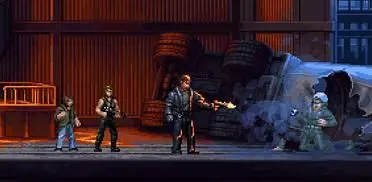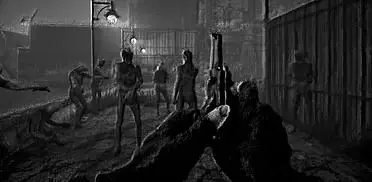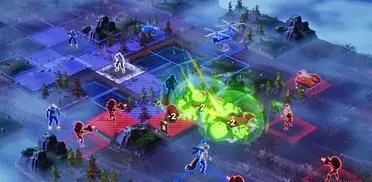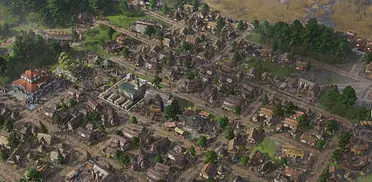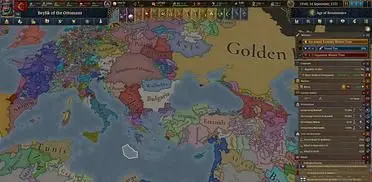Commandos: Origins is the real-time tactics series’ first entry in 21 years if we leave out the ill-fated FPS spinoff Commandos: Strike Force. It’s still set to launch in 2024, and we’ve been able to interview some of its developers and watch an extended live demo before it hits Gamescom 2024, where fans will be able to check it out.
Joining us, we had Jürgen Reusswig (studio director at Claymore Game Studios) and Gregor Frankenberg (level designer), who walked us through the demo and were kind enough to answer some of our most pressing questions. At the time of writing, we’re not sure whether Gamescom (and online) audiences will get a similar look at the game, so it must be noted what we saw wasn’t an entirely linear demo played normally, as the devs wanted to show us key elements of the missions and the game’s systems.
By and large, Commandos: Origins isn’t aiming to reinvent the wheel from what we can gather, as Reusswig, his studio, and publisher Kalypso Media are well aware that “the original Commandos fans, the hardcore fans, the people who played it at the time have a very clear idea of what a Commandos game is.” This is a matter that came up during the Q&A section of the meeting, but it’s also instantly clear from the demo alone. Commandos: Origins follows a traditional mission structure. You beat one, you unlock the next. There is no ‘meta progression’ and very few modern design elements that ‘disrupt’ what a Commandos game traditionally is. It’s just more Commandos, presented in a shinier and perhaps more refined way.
The game makes a striking impression from the get-go, as it’s noticeably more colorful and vibrant than its Pyro Studios-developed predecessors, which were fittingly dark in their visuals to match the tone of World War II. This time around, we’re getting sent into Nazi-occupied territory during the early days of the conflict, and that seemed like the perfect opportunity to try something new with the visual presentation, according to Reusswig: “We wanted to, on purpose, not be too dark because we wanted to give the player some nice environments to look at while he’s performing the actions, because a lot of World War II games have this dark, depressive… I don’t know if you played War Mongrels… It’s really grayish-dark, and we intentionally did not want to have that for our game… I mean, the Lofoten Islands are beautiful. The Channel Islands are beautiful, and we didn’t want to have this depressive atmosphere.”
Fear not, as the actions you’ll be performing inside these expansive levels are still grim. The mission that was showcased – we only got brief looks at the visuals of other levels – was set in Guernsey, Channel Islands, in September 1940, and included Jack O’Hara “the Green Beret,” Thomas “the Sapper” Hanock, and James “the Marine” Blackwood. All of them caused plenty of mayhem and murdered a huge number of Nazis as they went after the main objective, which was to disable two long-range-detection radars.
Much like in the original games, players are dropped into these huge, richly detailed maps that can be freely traversed and include several opportunities and possible ways to cause chaos or simply infiltrate the enemy bases. There are stationary guards, patrols, and obstacles such as fences that must be either avoided or neutralised. A key highlight in the demo was the inclusion of pieces of scenery and items that characters can interact with to quickly dispose of Nazis; think of the falling chandeliers and other lethal opportunities found in the more recent Hitman games. During the demo, some of the enemies were crushed by falling debris and piles of logs; these allow certain kills to look like unfortunate accidents to anyone checking in on the victims. And yes, there are plenty of exploding red barrels around that have been put there on purpose.
These environmental kills came across as the sort of opportunities players could make great use of, as raising the alarm level – of which there are three before the base goes into a full lockdown – seemed rather easy. Of course, dragging and hiding corpses is still a possibility, yet that considerably slows down as the mission progresses, and veteran players surely remember that part of the original games. Speaking of using the environment to your advantage, there are actions, like ‘burying’ yourself as the Green Beret, which is key to navigating the busiest areas or simply putting a squad member in ‘stand by’ while others maneuver around the map.
At one point, we switched over to the Marine, who’d entered the level from an entirely different position and had an inflatable zodiac he could deploy at will. This allowed him to circle the island and infiltrate the base from different locations, but the more creative players – whether playing solo or co-op (local or online) – will surely employ greater strategies thanks to this class/squad-based flexibility. In a way, it appears that Claymore is ‘asking’ players to try to break the game once they know a mission inside out. This is the sort of game design approach that made the aforementioned Hitman games modern sandbox classics, and the studio could be tapping into that potential here.
With Commandos: Origins coming to current-gen consoles on top of PC, much like the HD remasters of Commandos 2 & 3, a big concern for many veterans might be how the UI and controls have been modernized and adapted to make the experience accessible without forgoing the degree of control its predecessors allowed. From what we’ve been able to see, Claymore’s work on that front appears to be solid, yet it’s an ongoing effort, especially as more tests take place: “We have put a lot of effort in there to make the UI, UX controls and also putting it on the gamepad as good as possible, and still iterate on that a lot. We will again make a closed beta test where we get feedback there and try to listen to the old fans, but also to the new players.”
After exploring several possible ways into the deeper area of the base and learning the basics of each class, the synergies between them became clearer: The Green Beret is a great infiltrator and killer all-around, not afraid of direct confrontation; meanwhile, the Sapper excels at disposing of groups of enemies and tricky patrols with his traps; lastly, the Marine proved to be a swift and silent killer that could easily move around the map. At some point, progress into a key area was halted by an electrified fence, so it was up to the Marine to cut the power from his position as a ninja of sorts to allow the Sapper to cut the disabled fence and get into the area alongside the Green Beret.
Again, this was just one way to complete the mission, and looking at the map and the many tools at our disposal, it sure looks like Commandos: Origins will be a replayable game for real-time tactics fanatics. This philosophy is also reinforced by the objectives themselves, which stated the radars could either be disabled or bombarded; the latter option required the commandos to destroy three anti-air cannons instead, and in most cases, they seemed more vulnerable and not as deep into the enemy base. The required explosions raised alarms, yet the squad could still sneak around and take advantage of the confusion. In the end, the player chose to complete the mission this way, but that didn’t mark the actual end point of the level.
Safely extracting all three characters is equally important, and it may become a harder final task with a base full of Nazis on high alert. Still, opportunities abound, and so the three commandos successfully exfilled (with some external help due to time constraints, we must say) via one fishing boat.
In January 2020, Claymore Game Studios was founded by Reusswig alone. “I had the mission to build up a studio that can develop the next Commandos game for Kalypso. I started recruiting a core team of six people first, we did preproduction and defined what are we going to do, what is our mission, etcetera… We did not develop for over four years with a full team… We’re building everything from scratch.” The studio director recalled his start in the industry in 1994 at Sunflowers, where he eventually helped build up the famous Anno franchise. In fact, many developers at Claymore come from old Anno teams. “It was also basically a goal for us to not only create new jobs in the industry but also allow new people to start their first jobs in the industry.”
Gregor Frankenberg is one of those people: younger talent that joined Claymore to help inject new blood into the decades-old franchise. We asked him about influences used to establish an overall look and feeling when building the varied locales we’ll be visiting, and while of course the original games and historical war events were vital touchstones, other games, and media came into the equation: “We looked at different other media… I don’t know if you know Band of Brothers, the series, as a great take on the campaign in France and the Western Front. Yeah, and other, let’s call them competitors or other games in the same genre, like Shadow Tactics. We had a look at them… They gave us great inspiration.”
All in all, Commandos: Origins appears to be on the right track to become a worthy follow-up to the strategy/tactics classics from Pyro Studios. Claymore seems to have a good ‘game plan’ set in place to reinvigorate the veteran franchise, and we’re eager to see how the whole thing comes together once it releases. That said, given the studio is talking about further closed playtests and the fact the voices in the demo still were AI-generated placeholders, we wouldn’t be surprised if the Kalypso-published revival slips into 2025 to ensure a truly polished launch.
Commandos: Origins will be released on PS5, Xbox Series X/S, and PC later this year unless plans change. It’s set to launch on Xbox and PC Game Pass on day one too.





